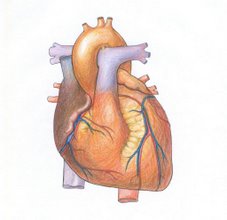Tests for Glucose (Sugar) and HbA1c
Urine test for glucose
In a healthy non-diabetic person urine does not contain glucose. If blood glucose levels are high, glucose is excreted through urine. A simple dipstick test can detect glucose in urine sample. If the dipstick test shows the presence of glucose in urine, one may be having diabetes.
Some people have kidneys, in which glucose may get excreted, despite normal blood glucose levels. Therefore, if urine contains glucose, person should have a blood glucose test done to confirm or rule out diabetes.
Blood tests for glucose
Random blood glucose level
For a random blood glucose test, blood can be drawn at any time throughout the day, regardless of when the person last ate. A random blood glucose level of 200 mg/dL (11.1 mmol/L) or higher in a person suggests a diagnosis of diabetes.
Fasting blood glucose level
A glucose level below 200mg / dl on a random blood sample does not rule out diabetes. Fasting blood glucose level is a more accurate test.
This testing involves measurement of blood glucose after not eating or drinking for 8 to 12 hours (usually overnight). Fasting blood glucose is normally less than 100 mg/dL (5.6 mmol/L); values of 126 mg/dL (7.0 mmol/L) or higher are diagnostic of diabetes; the test must be repeated on another day to confirm the diagnosis of diabetes.
Oral glucose tolerance test
For this test, one fasts overnight. In the morning the person is given a drink, which contains 75g of glucose. A blood sample is taken two hours later. Normally, body should be able to deal with the glucose and blood level should not go too high. A glucose level of 200mg. / dL (11.1 mmol/l) or more in the blood sample taken after two hours indicates diabetes.
Home monitoring
A drop of blood from a finger prick is placed on a test strip, which has a chemical, impregnated which reacts with glucose. By using a color chart, or a small glucose meter machine, the blood level of glucose can be measured quickly.
The HbA1c blood test
This test is generally used in people with known diabetes .If one has diabetes, HbA1c level may be done 3 to 4 times a year. The test measures a part of the red blood cells. Glucose in the blood attaches to part of the red blood cells. More the glucose levels more will be the attachment of sugar to the red blood cells. This part can be measured and gives a good indication of average blood glucose over the last 2-3 months. Normal values for A1C are usually 6.1 percent or lower (indicating an average blood glucose of 120 mg/dL [6.6 mmol/L]).
Treatment for diabetes aims to lower HbA1c to below a target level. The target level is usually somewhere between 6.5% and 7.5%. If HbA1c is above target level then one may be advised to step up treatment to keep blood glucose level down. The step up treatment can be increasing the dose of medication, improving diet, etc.
Criteria for diabetes
The following criteria are used to define blood glucose levels as normal or indicative of diabetes.
Normal — Fasting plasma glucose (FPG) <100>
Diabetes mellitus — A person is diagnosed with diabetes if they have symptoms of diabetes and a fasting blood glucose level of 126 mg/dL (7 mmol/L) or higher,
Or if they have symptoms and a random blood glucose of 200 mg/dL (11.1 mmol/L) or higher.
These blood tests must be repeated to confirm that they remain abnormally high.
Pre diabetes – It means that the person is not diabetic but may become diabetic. This gives an indication or warning signal for the person to make necessary changes in lifestyle and to keep blood sugar test done every year.
Impaired fasting glucose - fasting plasma glucose between 100 and 125 mg/dL (5.6 to 6.9 mmol/L).
Impaired glucose tolerance - blood glucose level of 140 to 199 mg/dL, measured two hours after a 75-gram oral glucose tolerance test.
skip to main |
skip to sidebar
Articles Read :

Home :: Shopping :: KitchenTaste :: Computer :: Sci - Tech :: Health :: Travel :: the World :: MalayalaM :: Spirituality :: Fun & Jokes :: Education :: Pet Animals :: Search
Articles Read :
Articles
Blog Archive
